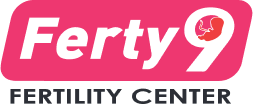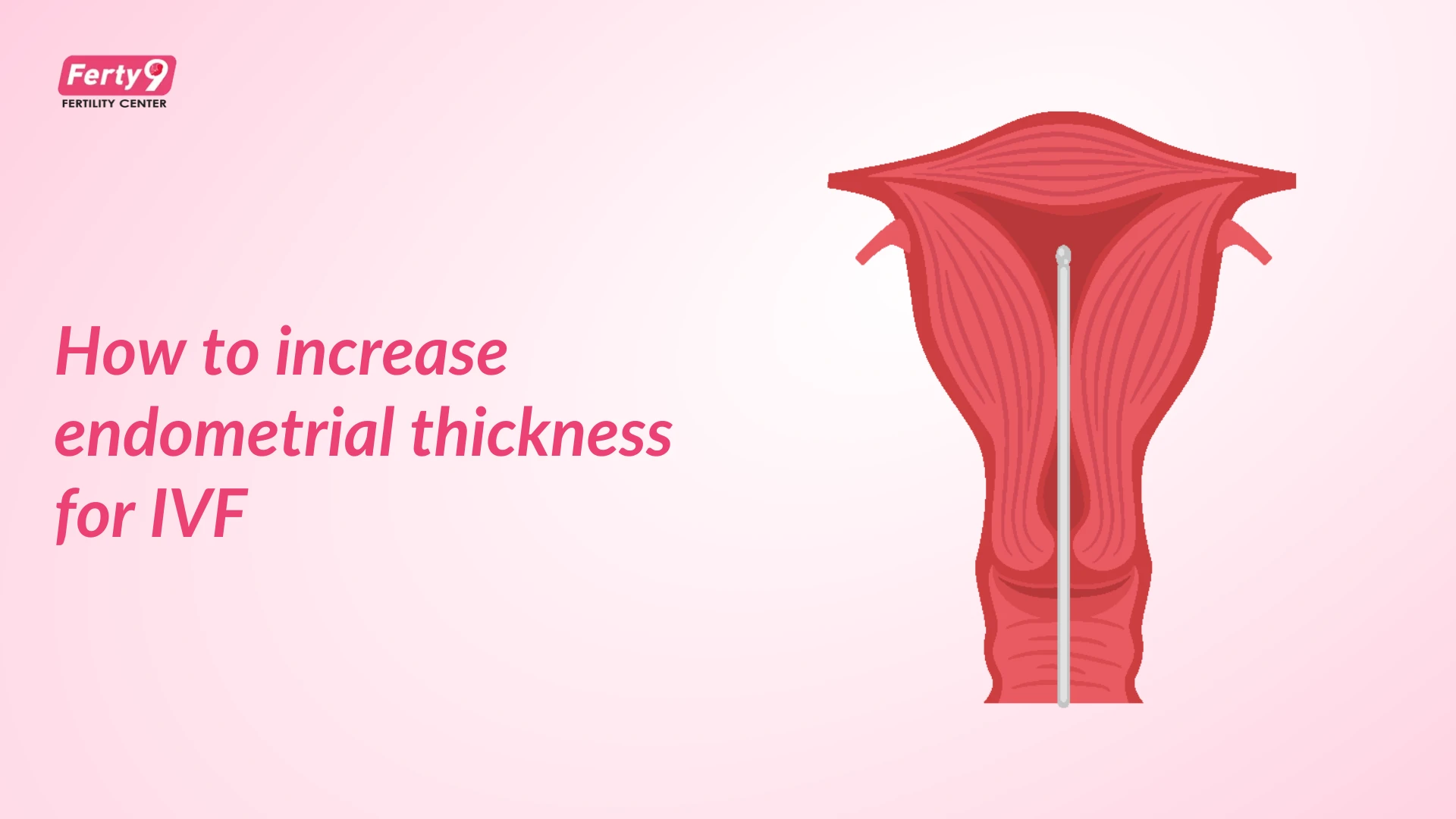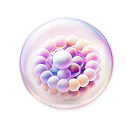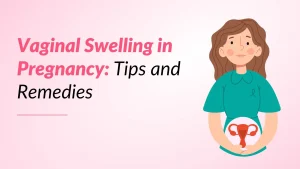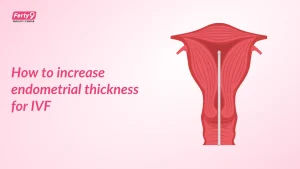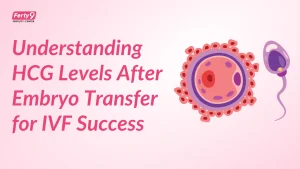When preparing for an IVF journey, we often focus on the quality of eggs and embryos. However, a healthy embryo needs a healthy and welcoming home to implant and grow. This “home” is your endometrium, the inner lining of your uterus.
The thickness of this lining is one of the most critical factors for IVF success. It needs to be thick and receptive enough for the embryo to attach. The ideal endometrial thickness for a successful implantation is typically between 7 mm and 14 mm.
If you’ve been told your lining is thin, please don’t be discouraged. It’s a common and often treatable condition. This guide will walk you through the medical treatments, natural remedies, and lifestyle changes we use at Ferty9 to help you build a thick, healthy lining for your IVF success.
Understanding Endometrial Thickness
What is the endometrial lining?
The endometrium is a dynamic layer of tissue that lines the inside of your uterus. Throughout your menstrual cycle, it changes in response to hormones.
After your period, the hormone estrogen causes the lining to grow and thicken. After ovulation, progesterone helps this lining become “receptive”—rich in blood vessels and nutrients, making it the perfect, cushiony spot for an embryo to implant.
Common causes of a thin endometrium
A thin lining (less than 7mm) can make it difficult for an embryo to attach. Common causes include:
- Hormonal Imbalance: Low levels of estrogen are the most common cause.
- Poor Blood Flow: Reduced blood flow to the uterus can prevent the lining from developing properly.
- Uterine Scarring: Scar tissue from past procedures like a D&C (dilatation and curettage) or from infections can damage the lining.
- Certain Medications: Some fertility drugs (like Clomiphene) can, in some cases, have a side effect of thinning the lining.
- Age: As a woman ages, uterine blood flow can decrease.
Ideal Endometrial Thickness for IVF Success
For an IVF transfer, doctors look for a lining that is at least 7 mm thick. While 7mm is the minimum, a lining of 8mm and above is often considered ideal.
However, thickness isn’t the only thing that matters. We also look at the quality and pattern of the lining on an ultrasound. A healthy, receptive lining has a beautiful “trilaminar” or three-layer appearance. Our goal at Ferty9 is to achieve both ideal thickness and excellent quality for your transfer.
Medical Treatments to Increase Endometrial Thickness
If your lining is thin, your fertility specialist at Ferty9 has several effective medical options to help.
- Estrogen Therapy: This is the most common first-line treatment. We may prescribe estrogen (like Estradiol tablets) in a higher or different form (patches, gels) to help stimulate the lining to grow.
- Low-Dose Aspirin: A small, daily dose of aspirin is sometimes recommended to improve blood circulation to the uterus and help the lining become more receptive.
- Sildenafil (Viagra): Used as a vaginal suppository, this medication works by increasing blood flow to the pelvic region, which can significantly help thicken the endometrium.
- PRP (Platelet-Rich Plasma) Therapy: This is a promising new treatment for a persistently thin lining. A small amount of your own blood is drawn, concentrated in a lab to get the platelet-rich plasma, and then infused into your uterus. These platelets are rich in growth factors that can help regenerate and thicken the endometrial tissue.
- G-CSF (Granulocyte Colony-Stimulating Factor): This is another type of infusion into the uterus that can help improve the lining’s thickness and receptivity in difficult cases.
- Hormonal Adjustments: Your doctor will carefully monitor and balance your estrogen and progesterone levels to create the optimal environment for implantation.
Natural Ways to Improve Endometrial Thickness
Alongside medical treatment, these natural and lifestyle approaches can significantly support the development of a healthy uterine lining.
Your diet is a powerful tool. Focus on foods that improve blood flow and are rich in key nutrients.
- Foods Rich in L-Arginine: This amino acid helps produce nitric oxide, which relaxes blood vessels and improves circulation. Find it in nuts, seeds, and lentils (dal).
- Foods Rich in Vitamin E: An antioxidant that also improves blood flow. Found in avocados, almonds, and leafy greens.
- Omega-3 Fatty Acids: Excellent for reducing inflammation. Found in walnuts, flaxseeds (alsi), and chia seeds.
- Blood-Building Foods: Eat iron-rich foods like beetroot, spinach (palak), and pomegranates.
- Antioxidants: Eat a colorful variety of fruits like berries and citrus fruits.
Hydration
This is a simple but crucial step. Staying well-hydrated ensures good blood volume and circulation, which is essential for your uterus. Aim for 8-10 glasses of water a day.
Physical Activity
Gentle, consistent movement is key. Avoid high-impact exercise, which can draw blood away from the uterus.
- Best Exercises: Walking is fantastic for circulation. Fertility yoga includes specific poses designed to increase blood flow to the pelvic organs.
Stress Management
High stress levels release cortisol, a hormone that can interfere with your reproductive hormones.
- Techniques: Meditation, deep-breathing exercises (pranayama), and acupuncture are all proven ways to reduce stress and improve blood flow to the uterus.
Lifestyle Changes That Support a Healthy Endometrium
- Quit Smoking: Smoking constricts blood vessels and is toxic to your reproductive health. Quitting is one of the best things you can do.
- Limit Caffeine and Alcohol: Excessive intake of both can negatively impact your uterine lining and fertility.
- Maintain a Healthy BMI: Being at a healthy weight (Body Mass Index) helps keep your hormones balanced.
- Get Adequate Sleep: Aim for 7-8 hours of quality sleep per night. This is when your body repairs and regenerates.
Advanced Options for Refractory Thin Endometrium
For the small number of cases where the lining remains thin despite these treatments, Ferty9 offers advanced options:
- Endometrial Scratching: A minor procedure where the uterine lining is gently “scratched.” This is thought to cause a healing response that can help a future embryo implant.
- Stem Cell Therapy: This is an emerging, regenerative treatment being researched for its potential to rebuild a damaged uterine lining.
Summary
A thin endometrium can be a challenge, but it is one that we can often overcome. The key is a personalized treatment plan that combines the best of medical science with supportive natural and lifestyle changes. By working closely with your fertility expert at Ferty9, we can take proactive steps to build a thick, healthy, and receptive lining for your precious embryo.
